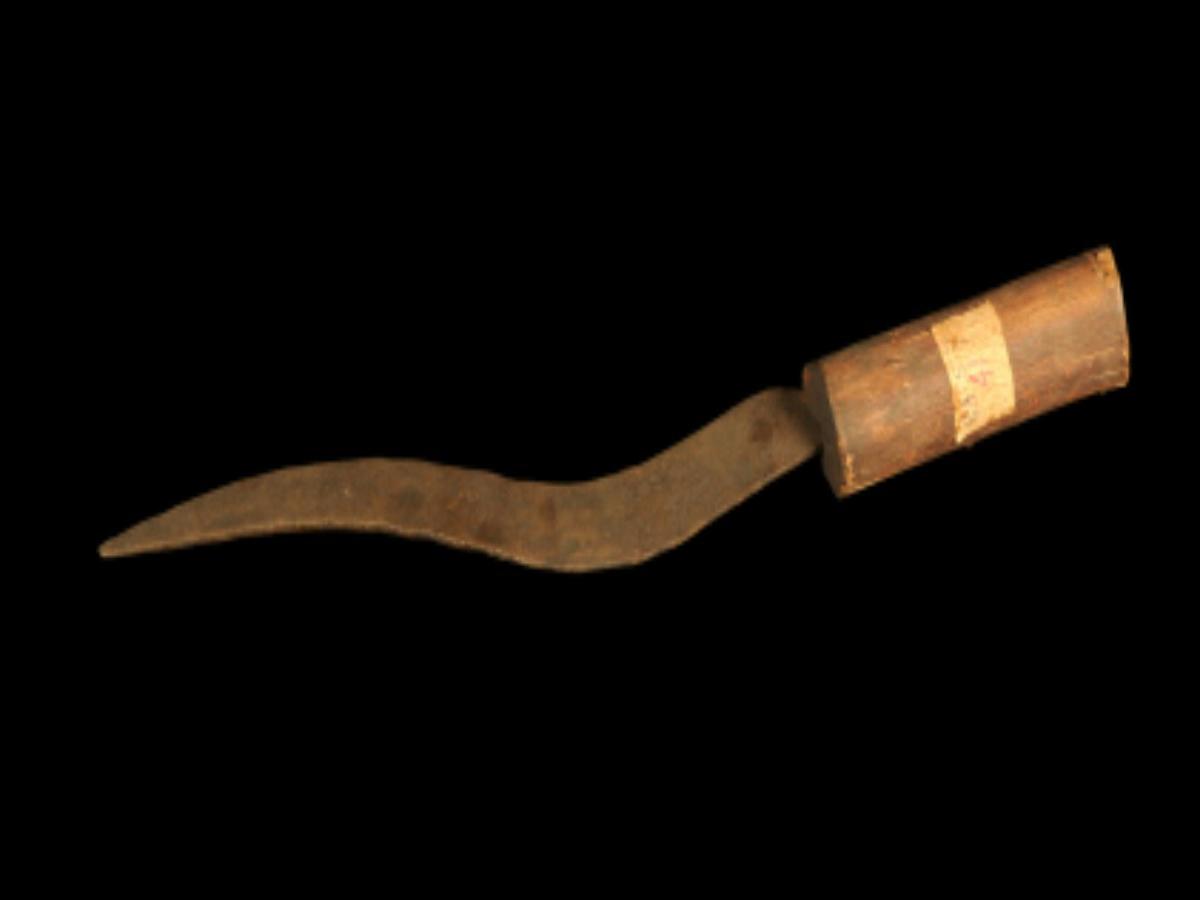State
Tribe Name
Art Type
short description
The Sano-Kati. A small knife favored by the tribute Gadaba. It focuses on indigenous blacksmithing and utility craftsmanship using this traditional knife. The actual tool comprises two parts: One is a well-curved sharp iron blade, whereas the other is a cylindrical wooden handle. It is small-sized and designed especially for needs in daily life. Such as preparing food, cutting ropes, or even doing agriculture-related work.
Thumbnail

Filter Postion
Left
Filter Background
Off
Theme
Filter Header Image

content
Image

description
The Sano-Kati. A small knife favored by the tribute Gadaba. It focuses on indigenous blacksmithing and utility craftsmanship using this traditional knife. The actual tool comprises two parts: One is a well-curved sharp iron blade, whereas the other is a cylindrical wooden handle. It is small-sized and designed especially for needs in daily life. Such as preparing food, cutting ropes, or even doing agriculture-related work.
The pointy and well-honed edge of the cutting edge makes it proper for heavy-duty use and has been fitted well into the wooden handle. It's flat-end ends in a nice rounded part for a perfect and stable holding. While being organic, this knife is however a product of a sustainable lifestyle among the Gadaba, where every tool is optimized for efficiency and durability. Currently, the Sano-Kati is preserved in the Indian Museum, Kolkata, and symbolizes rural innovation and systems of tribal knowledge. It thus brings to fore the ability of the Gadaba community to adapt their tools suitably to their environmental and cultural context, which lies within a balance of material availability, function, and tradition.
The pointy and well-honed edge of the cutting edge makes it proper for heavy-duty use and has been fitted well into the wooden handle. It's flat-end ends in a nice rounded part for a perfect and stable holding. While being organic, this knife is however a product of a sustainable lifestyle among the Gadaba, where every tool is optimized for efficiency and durability. Currently, the Sano-Kati is preserved in the Indian Museum, Kolkata, and symbolizes rural innovation and systems of tribal knowledge. It thus brings to fore the ability of the Gadaba community to adapt their tools suitably to their environmental and cultural context, which lies within a balance of material availability, function, and tradition.
Image Mode
landscape
promoted
On
Verified
Off
